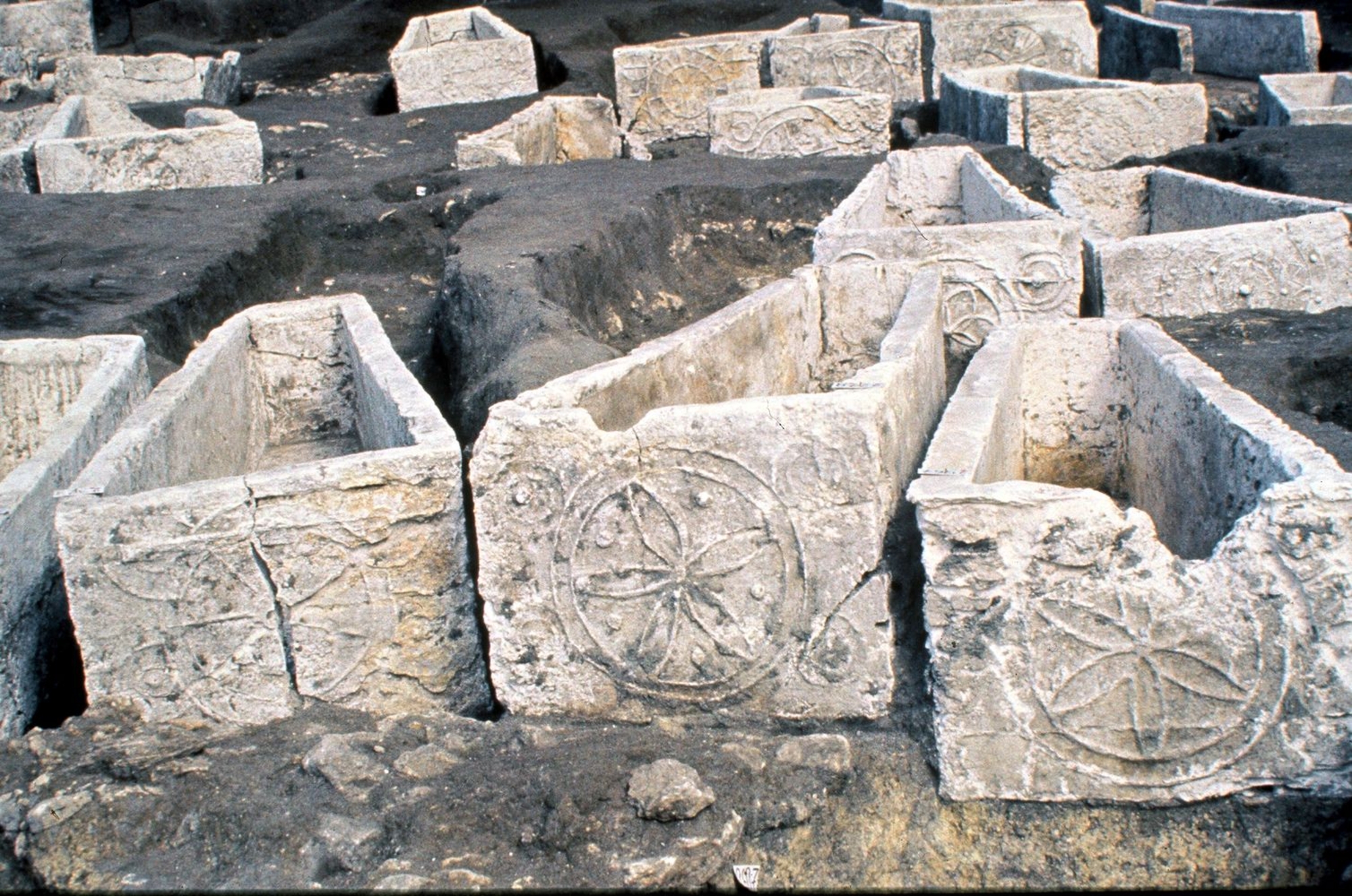- Home
- The town and the abbey
- The site from its origins
- Early history
- The tomb of Saint Denis
It was long known that there were graves beneath the basilica: the first excavations were begun by the architect Eugène Viollet-le-Duc in the mid-nineteenth century. Nearly a century later, excavations were resumed within a much more scientific framework. Between 1953 and 1973, archaeologists Édouard Salin and Michel Fleury studied more than five dozen graves in the necropolis.
Beneath the high altar, where, as tradition would have it, the body of the martyred saint lies, the two archaeologists uncovered a vast pit. This was quickly assumed to be the location of the grave of Saint Denis; however, there was no body in it, and the fill rubble contained only a few fragments of sarcophagi, roof tiles, and human and animal bones, associated with Roman-era potsherds.
The interpretation of this pit is still the subject of controversy-for Edouard Salin, the pit is evidence that the venerated grave was exhumed, but Michel Fleury sees it as the foundation for the tomb erected on the site of the grave.
Archaeological crypt in the basilica.
In the foreground, a sarcophagus from the fourth-century necropolis abuts the pit dug at the site of Denis's grave. Behind, sculpted blocks reused for the foundation of the first basilica.
© UASD / J. Mangin.

